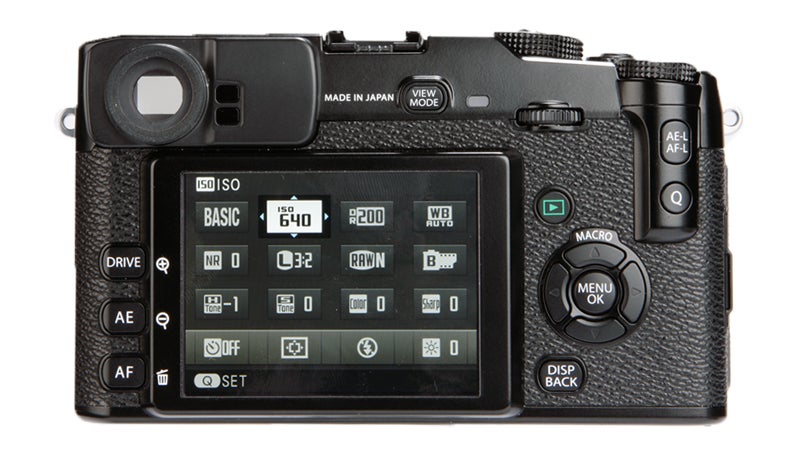Fujifilm's X-Pro1 - the company's first Compact System Camera - looks to be an impressive rangefinder-style camera. Does it deliver on its superior image quality claims? What Digital Camera's Fuji X-Pro1 review investigates...
Fujifilm X-Pro1 Review
Design
Fujifilm X-Pro1 review – Design
The X-Pro1’s bold yet understated design makes it look like a camera from years gone by; yet it still looks rather elegant and contemporary.
 The design may be bulky, but the camera feels great in the hand, buttons and dials are positioned well and the camera feels right whether utilising the viewfinder or rear screen to shoot.
The design may be bulky, but the camera feels great in the hand, buttons and dials are positioned well and the camera feels right whether utilising the viewfinder or rear screen to shoot.
The camera’s magnesium top and bottom are painted in a black finish that, while it looks the part, isn’t as hardy as it should be – after just a couple of days some of the paint was coming off due to knocking against other metal parts in a camera bag. To avoid this you’ll want to invest in the leather case and get soft pouches for any lenses.
 As the camera is a rangefinder, the optical viewfinder doesn’t see exactly what the lens sees (known as parallax error). However, the Hybrid Multi Viewfinder has a clever way of solving this: when using the electronic overlay in the optical viewfinder, the camera will calculate the focus distance and adjust the position of the crop marks accordingly. Framing isn’t exact, in part based on the 90% field of view crop marks, but it’s the same method that the X100 uses which means interchanging between the two cameras will also feel natural.
As the camera is a rangefinder, the optical viewfinder doesn’t see exactly what the lens sees (known as parallax error). However, the Hybrid Multi Viewfinder has a clever way of solving this: when using the electronic overlay in the optical viewfinder, the camera will calculate the focus distance and adjust the position of the crop marks accordingly. Framing isn’t exact, in part based on the 90% field of view crop marks, but it’s the same method that the X100 uses which means interchanging between the two cameras will also feel natural.
Using the X-Pro1 isn’t anything like most modern designs; it’s akin to the Leica M9 or other similar rangefinder models. There’s no ‘mode dial’ to be found here: Instead each lens has a traditional aperture ring (each adjusts in 1/3rd stops as well with full stop markings) as well as an Auto or ‘A’ setting. Pair this with the shutter dial on top of the camera – which ranges from 1sec – 1/4000th of a sec, or there are Bulb, Time and Auto settings – and the camera can be set to full Auto, Aperture Priority, Shutter Priority, or full Manual control by selecting a combination of the two. No menu digging required.
There’s also a +/-2EV exposure compensation dial to the rear of the camera, which is recessed into the body to prevent accidental knocks.
The three launch lenses, and to our knowledge all Fujifilm XF lenses to follow, do not feature leaf shutters as per the X100’s lens. Instead a standard focal-plane shutter limits flash sync to 1/180th second maximum, which rules out faster flash sync shooting opportunities.




